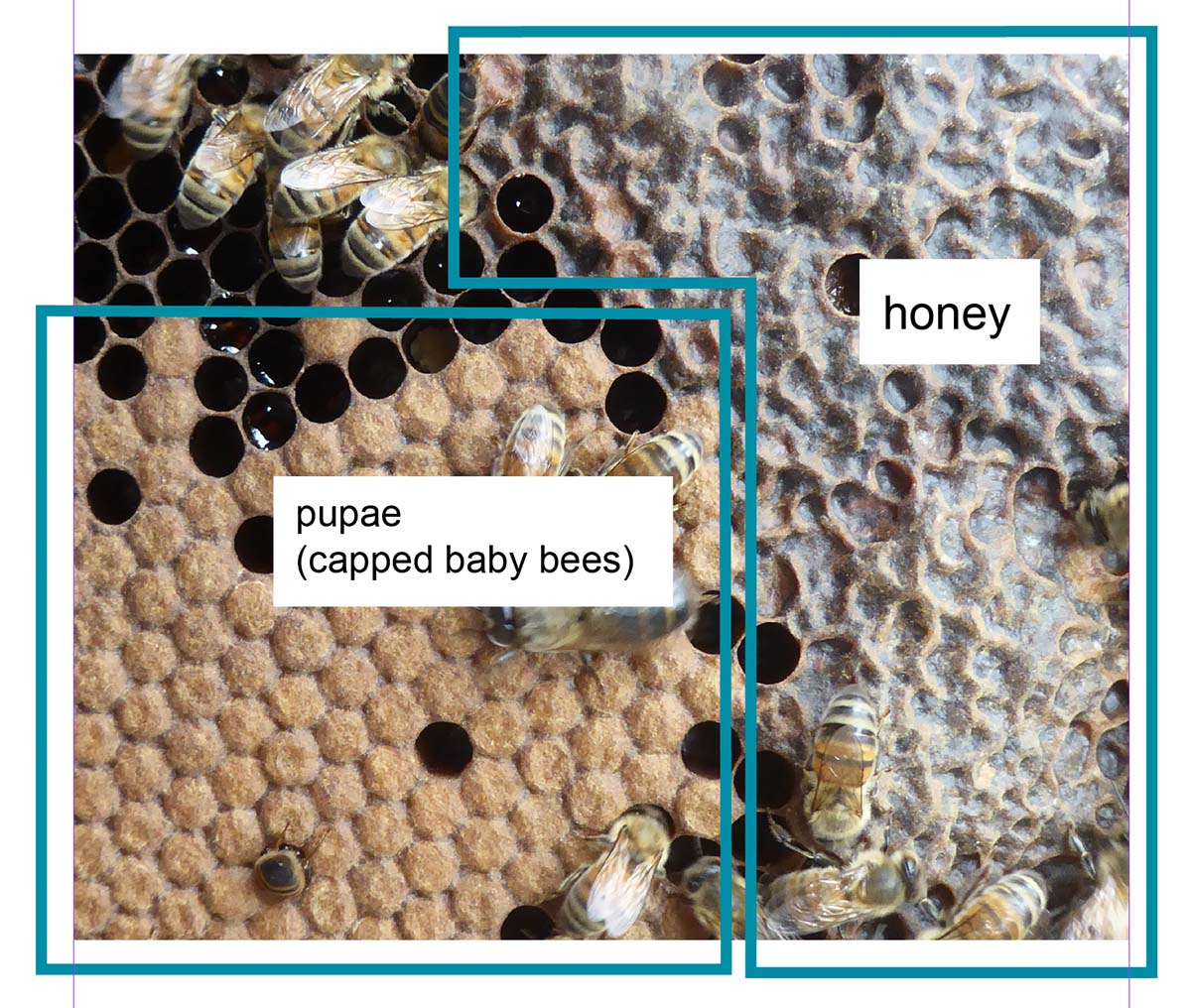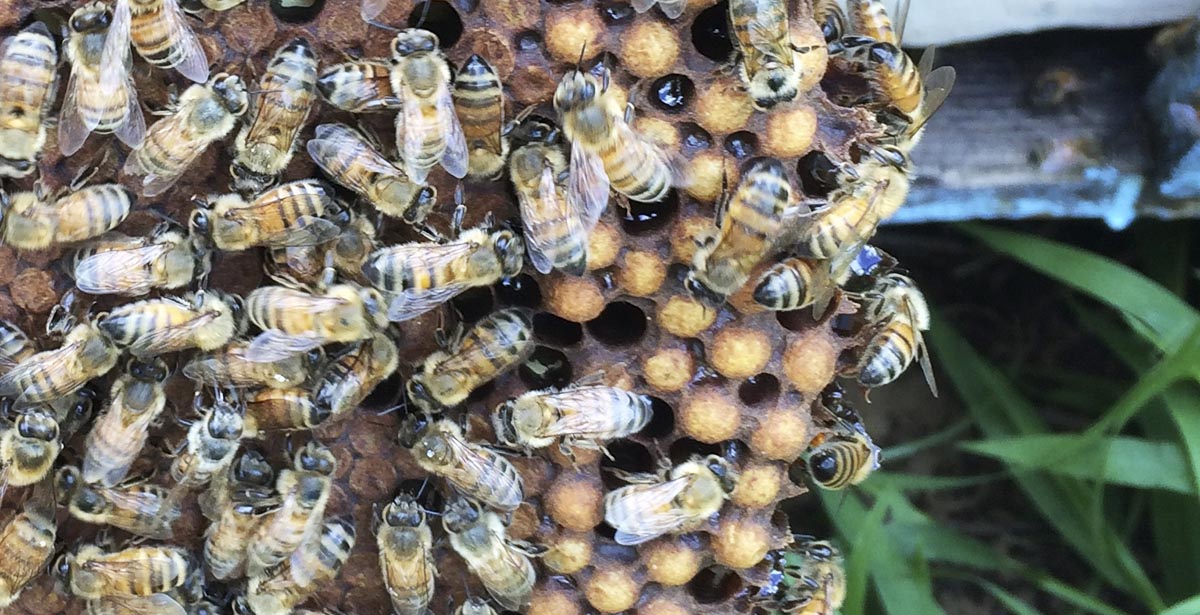
How to Read a Frame of Bees
Feb 01, 2022You open a beehive, look around, and then what? What exactly are the bees doing and how can you tell the difference between honey, baby bees and pollen? In this article we'll go through the frames of a hive and explain what you're looking at so you know what's going on in your hive.
Check out our video to see me open a hive, pull out each frame and explain what's going on, on each frame.
Honeycomb, The Foundation
When you open a hive, you'll either see an empty space or you'll see honeycomb. Honeycomb is the foundation of the hive. It's the floor, the ceiling, the stairs, the walls, the holding space for food and where the babies develop. It's made by the bees. They create it by secreting beeswax and shaping it into cells which they join together to make honeycomb.
What's in Honeycomb
Within the cells of honeycomb, you're either going to see food or baby bees. On top of the honeycomb, you may see bees walking around or dancing.
Honey, Nectar & Bee Bread
There are three different kinds of food in the hive - nectar, honey and bee bread. Nectar is what the bees gather from flowers. It is mostly water with some sugar. Once the bees evaporate the majority of the moisture from the nectar, it is considered honey. Honey has a very low moisture content, which is why it can last forever. Usually, if a cell looks like it has liquid inside it, you're looking at nectar. Once it's honey, the bees cover the cell up with a thin piece of wax.
Bee bread is the third kind of food in the hive. It is a mixture of honey and pollen. It is a solid substance that has a bit of a shine to it and is often a shade of yellow, orange or red. However, pollen can range in color and can even be blue!
Check out our video to see what all of this looks like on a frame.
Next, let's talk about the baby bees.
Identifying Eggs, Larvae and Pupae
It's pretty easy to tell the difference between an egg, larva and pupa. An egg is, well, shaped like a little egg or a grain of rice. It's white and very small, though visible by the naked human eye. A larva is a white worm. When the egg first hatches into a larva, it's very small and floating in a pool of liquid. These are hard to spot. However, as they get older, they get larger and eventually take up the entire cell. These guys are easy to spot. The pupae have a cap over them, so you cannot see them inside the cell.
Tip! An easy way to spot small larva and eggs is to use black foundation instead of yellow. The white eggs and worms stand out much better.
The tricky parts to identifying baby bees, what we call the brood, is being able to tell the difference between capped pupae and capped honey since they both have a cover over them.
As you can see in the photo below, capped pupae have a flat, wax cap over the cells and you can see the hexagon-shaped dividing lines between the cells. Capped honey has a bumpy capping that extends over multiple cells and you cannot see the lines dividing the hexagonal cells.

How to Tell the Gender of a Baby Bee
We have the queen bee, worker bees and drones (male bees). They each grow in a different cell size. The majority of the brood in the hive are worker bees, so when in doubt, it's probably a worker bee you're looking at. However, a small percentage of the hive may be drones. Drones hatch from a very similar looking cell, it is just a little bit larger and their pupae have a dome-shaped capping over them (to fit their larger bodies). Queens hatch from a cell that is considerably larger. It also hangs off the frame vertically and is the shape of a peanut shell (and bumpy like one too). See below for what each looks like.

Above: Photo of pupating drones. Notice the dome-shaped cap over each cell.

Above: Photo of a queen cell.
In conclusion, inside a hive, the majority of what you're going to see is adult bees, baby bees and food. If you ever are in doubt as to what you're looking at, keep in mind that the baby bees are usually in the first 1-2 boxes of the hive. The food is usually on the first and last frame of these lower boxes and in the uppermost boxes. If there's a cap over the cell, you can always poke a hole over one cell to see what's inside! Or, if you are a student of our online class, email us a photo and we'll tell you what's on the frame.
Want to learn more about beekeeping?
Join our newsletter for blog updates, beekeeping videos, sales and contests.



